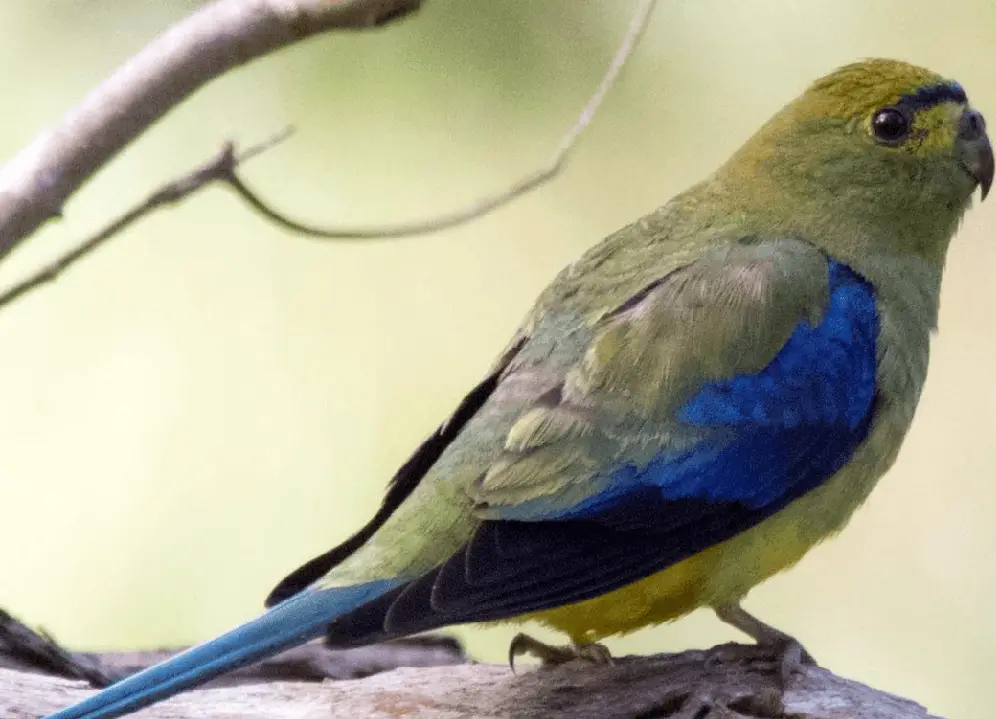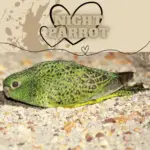
Blue winged Parrot 20–21 cm; 44–61 g. The area between eye and bill, and postocular mark, yellow; dark blue line across the forehead to the front of the eye, edged above pale blue;
crown bronze shading to olive-green on hind crown and rest of head and upperparts; breast pale grey-green shading to yellow on rest of underparts and undersides of tail except orange tinge to central belly; wing-coverts and flight-feathers dark blue; tail bluish grey, outer feathers tipped yellow.
The Blue winged Parrot Female has an olive-green crown and a smaller line on the forehead, underparts tinged dull green. Immature dull lacks line on the forehead.
Systematics History
Described forms cyanopterus (from S Victoria) and tasmanica (N Tasmania) are considered unacceptable. Monotypic.
Subspecies
Monotypic.
SOURCE: Tim Siggs
Distribution
SE Australia, where breeds only in S Victoria and SE South Australia and in Tasmania; after breeding, moves N to E South Australia, inland New South Wales, and SW Queensland.
Habitat
Eucalypt woodland in the breeding season, visiting pastures, clearings, and orchards; similar habitat in winter, but also Acacia scrubland, lightly wooded grassland, arid saltbush Atriplex plains, coastal and mountain heaths, lignum swamps, and coastal dunes and saltmarshes.
Movement
Migratory, although pattern unclear. Most birds in Tasmania move to the mainland in winter, and N parts of the range are only visited at that time; it is suspected that the same birds are involved, leap-frogging resident populations in SE Australia and apparently using a geographical loop.
Diet and Foraging
Seeds of grasses, notably Danthonia semibarbata, D. semiannularis, Aira caryophylla and Drosera peltata, also Poa caespitosa; seeds of herbs including Cryptostemma calendulaceum, Stenopetalum lineare, Helipterum jessenii, H. pygmaeum and Astroloma humifusum. Birds have been seen digging up newly sown seeds, and invertebrates may also be taken.
Sounds and Vocal Behavior
Not very vocal. In-flight a repeated high-pitched tinkling “sleet..tsleet..”. Also an insect-like faint staccato “tsit..”.
Breeding
Oct–Jan. blue winged parrotlet Nest in a hole in a tree, often a high eucalypt, but also in a stump, fence post, or fallen log; sometimes colonial. Eggs 4–6; incubation lasts 18–20 days; nestling period c. 30 days.
Conservation Status

Not globally threatened. CITES II. Common, especially in Tasmania, SW Victoria, and SE South Australia.




















